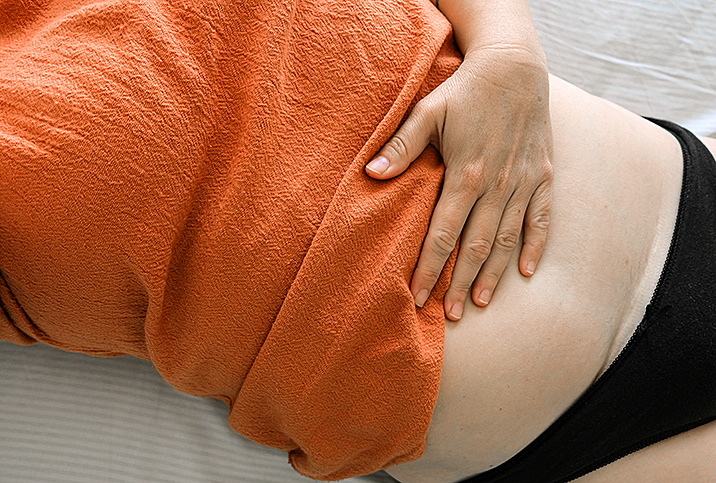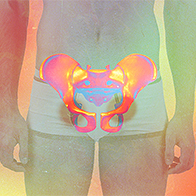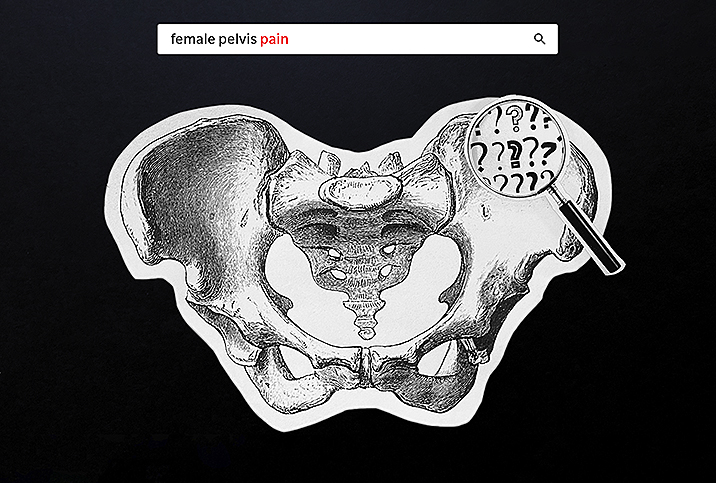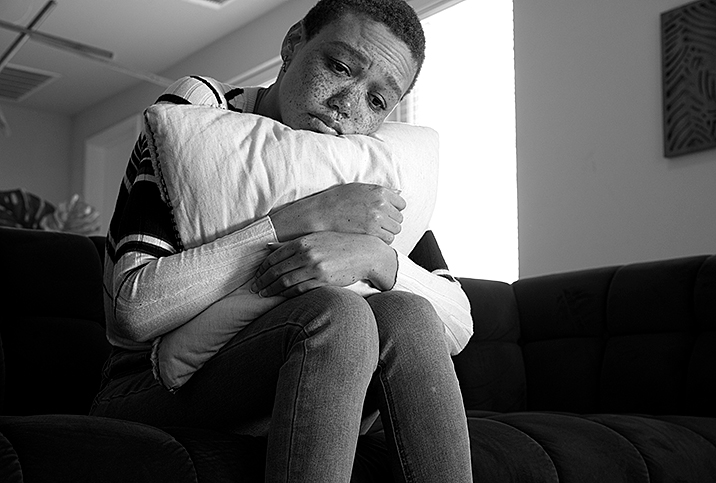Numb Vagina? Pudendal Neuralgia May Be to Blame

Pain in a nerve pathway (neuralgia) can be excruciating and even debilitating for some people. Those suffering from pudendal neuralgia (PN) are no stranger to this pain.
This disorder is a chronic pelvic pain syndrome that occurs when the pudendal nerve is compressed, irritated or injured, according to Marnie Glavin, founder and president of Pelvic Health Support Canada and host of the podcast Let's Talk Pelvic Health. The compression of nerves can result in severe pain.
According to Betsy Greenleaf, D.O., a urogynecologist in New Jersey, the pudendal nerve runs from the back of the genitals and branches off into other nerves. It also controls sphincter muscles and sends messages to the brain from the genital and anal region. Because of the placement and the crucial parts of the body the pudendal nerve interacts with, the nerve pain can be complicated.
It's unclear how many people suffer from PN, but experts believe it is rare.
What are the symptoms of PN?
Pudendal neuralgia symptoms are usually felt in the lower body: the genitals, anus and perineum. For some people, the symptoms can spread into the buttocks, legs and stomach.
The symptoms vary by case, but commonly present as:
- Burning pain
- Tingling or numbness in the butt, genitals or perineum
- Straining with bowel movements or urination
- Painful intercourse
- Sexual dysfunction
For Jo-Ann Taylor from Ontario, her pain was described as deep in her vagina. "If I was sitting for 30 minutes or more, I would get pain up in my rectum and vagina that radiated to my stomach," she said. "Sometimes the pain was so bad, I couldn't even sit down."
For many PN sufferers, pain is typically present when they are sitting down and disappears when they stand up. For some people, the pain is so bad they can't sit down at all, according to Taylor. Pain typically increases as the day progresses and is often worse in the colder months.
"Pudendal neuralgia is complicated," Glavin said. "Those with the disorder can experience pain in many areas."
What causes pudendal neuralgia?
According to Greenleaf, causes of pudendal neuralgia include:
- Colorectal or gynecological surgery
- Trauma incurred during labor/childbirth
- Excessive physical exercise
- Previous trauma to the pelvic or perineal region
- Cycling
- Straining
- Injury or trauma
- Problems related to the musculoskeletal system
- Bad posture
- Tumors
- Pelvic floor muscle spasms
- Infection
Glavin added that some people experience nerve compression from prolonged sitting or even prolonged constipation.
The cause, however, isn't clear for everyone. For Taylor, nothing traumatic caused her pudendal neuralgia, but she does wonder if cycling played a part.
Prior to the onset of her symptoms, Taylor regularly attended spin classes and was an avid cyclist. In the cycling community, PN is also called Cyclist's Syndrome because of its prevalence among cyclists. There is even a website called PN and Cycling, dedicated to spreading awareness of the connection.
Although there are no clinical studies on how cycling might cause PN, doctors and cycling enthusiasts understand there is a connection. "There is even a high percentage of police officers who ride bikes who develop pudendal neuralgia," Taylor stated.
Getting a diagnosis
Getting a diagnosis for PN can be difficult. Since the condition is rare, there are few healthcare professionals who are experts on the condition, and image testing cannot indicate PN. However, an MRI or CT scan is often performed to rule out other causes of pain.
A physical exam is conducted to test each pudendal nerve branch for pinprick sensation. This includes palpitations of a specific pathway of the pudendal nerve to the spine. If there is pain during the palpitations, a nerve injury is present. In women, palpitations of the uterus and ovaries are also done. Neurophysiological testing is recommended to confirm the diagnosis.
For Taylor, her doctor wasn't listening to her symptoms, and she was originally told she had a mental health issue. Unfortunately, her experience is not uncommon. According to a 2021 paper, few healthcare providers examine specifically for the disorder. Instead, doctors will often look for signs of infection, which can lead to frustration if no infection is found. It took going to several different doctors before Taylor finally got a diagnosis.
For women, getting a PN diagnosis can be particularly difficult. "Most urologists are male doctors," Taylor said. "This is because urology was developed primarily for men. If a woman has a problem other than an infection, they cannot understand it."
Urogynecology combines urology with the understanding of a woman's body. For those who suspect they have pudendal neuralgia, seeing a urogynecologist is key in getting help for the disorder.
So you have pudendal neuralgia…now what?
Physical therapy with a pelvic floor physiotherapist is often recommended as the first line of treatment for PN. Sometimes the pain can be related to muscle tightness in the pelvic floor. If this is the case, you can learn to relax your muscles with the guidance of a physiotherapist.
Physical therapy treatments might include dry needling, myofascial release, nerve gliding and other manual therapies. Pain medications are also commonly prescribed, and nerve blockers are sometimes recommended for pain management. Commonly prescribed medications include gabapentin, pregabalin, cyclobenzaprine and tricyclic antidepressants.
Taylor took pain medications at one point in her PN journey. She also went to a pain clinic for two years, where she received nerve blockers in her buttocks and back to help manage the pain.
"With pudendal neuralgia, the pain is on the inside of the body. When pain is on the outside of the body, you can comfort it and rub it. When it's on the inside of the body, you can't do that. And when you are in constant pain all day long, all you think about is pain," Taylor said. "It was to the point I was almost suicidal. I didn't know what to do. I kept increasing my pain medications and had even stopped working."
Surgery to remove tissue that may be pressing on the pudendal nerve is also an option in some cases. Surgery was the best option for Taylor when pain medications didn't solve the problem.
The role of mindfulness
Stress and anxiety reduction and management can be used to treat PN in some cases. Breathing techniques to lengthen the pelvic floor and slow down the nervous system, meditation, postural changes and prioritization of sleep may help in recovery.
According to Glavin, the brain has a big part in helping with chronic pain. "Pain stems from the central nervous system. The brain is a significant part of that," Glavin said. "Anyone with chronic pain can benefit from mindfulness meditation."
If you have pudendal neuralgia, whichever treatment path you take will require consistency and commitment to managing the condition. "There's not really a quick fix in pelvic health," Glavin said.




















